Living with Pain
People who had lost their homes and families to the A-bomb struggled to survive amid critical shortages of food and clothing. Because the Occupation Press Code greatly restricted news reports and even research into its effects, the conditions produced by the bombings were never adequately communicated, leading to widespread discrimination and prejudice against the hibakusha. Those who survived were forced to struggle desperately in an extremely harsh environment.
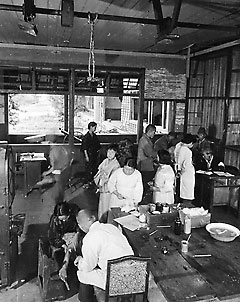 13 Relief stations are closed October 1945 Oshiba-cho Oshiba Elementary School Photo by Shunkichi Kikuchi The Wartime Casualties Care Law allowed for persons wounded during air raids and similar actions to receive free treatment, food and clothing at no cost for a period of two months. In Hiroshima City, the law provided for these services until October 5, 1945, and after that date the wounded were expected to pay for their medical treatment. After the relief stations were closed, care continued to be provided through the hospital of the Oshiba Elementary School. |
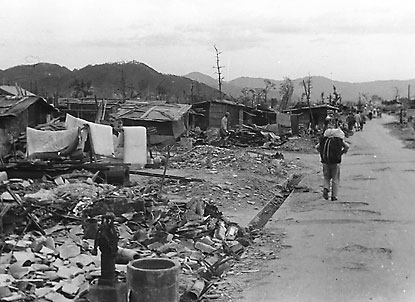 14 Huts constructed in the burnt-out ruins October 15, 1945 Near Yokogawa Station Photo by Shunkichi Kikuchi After the Wartime Casualties Care Law expired, A-bomb survivors received no special treatment, leaving them covered only by general welfare systems such as that of the Daily Life Security Law. Many people built huts from burnt wreckage, forced to live in desperate conditions by the constant lack of goods and resources. |
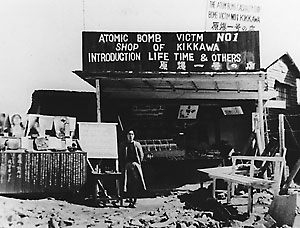 |
15 Solidarity among A-bomb survivors Courtesy of Ikimi Kikkawa Faced with a lack of aid and treatment, the A-bomb survivors had no choice but to unite and stand up for themselves. In 1948, a group of women who were exposed to the A-bomb held a meeting at Honkawa Elementary School. Later, in 1951, the Hiroshima A-bomb Victims Rehabilitation Society was formed around Kiyoshi Kikkawa to provide a forum for discussion of problems facing A-bomb survivors such as improving their living conditions. Kikkawa, introduced in the foreign media as "A-bomb Victim No. 1", operated a souvenir store near the A-bomb Dome while also participating in various support activities for A-bomb survivors. |
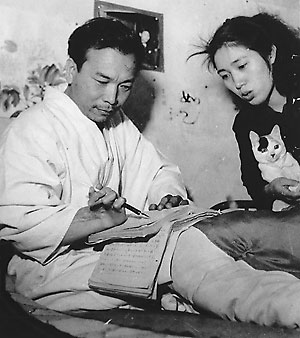 |
16 Suffering A-bomb survivor Courtesy of Ikimi Kikkawa Many people who were repeatedly hospitalized suffered economic hardships as they could not work as they had before due to dizziness and fatigue. In many cases, there were forced to live with severe symptoms that could not be cured. However, in the post-war chaos, society failed to recognize the suffering of the A-bomb survivors resulting in a noticeable lack of aid. |
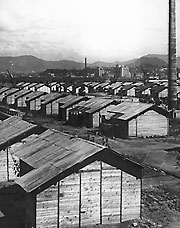 17 Simple houses built on former military land June 1947 Moto-machi Courtesy of Chugoku Shimbun Construction on city-owned housing began in 1946 on land formerly owned by the military in Moto-machi but the shortage of materials limited the amount of doors and other items so that only a few persons were able to receive housing. |
